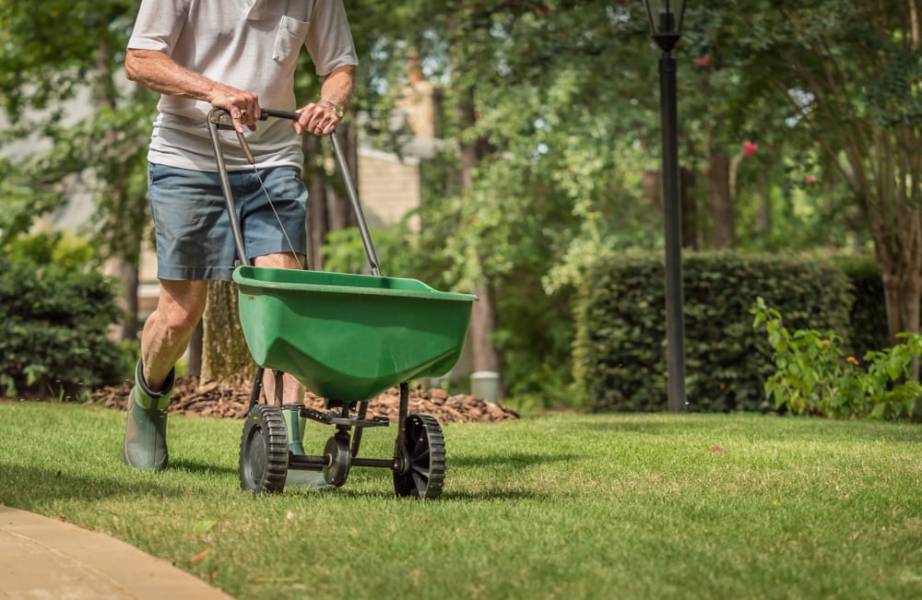 Lawns are a common feature of private gardens, public landscapes and parks in many parts of the world. We use them for aesthetic pleasure, as well as for sports or other outdoor recreational use. These days, we have gotten used to maintaining our lawns, even taking pride in them. Fertilising your lawn may seem straightforward, but it is really an art. So are the necessary steps to take when taking care of your garden area? When is fertilisation necessary?
Lawns are a common feature of private gardens, public landscapes and parks in many parts of the world. We use them for aesthetic pleasure, as well as for sports or other outdoor recreational use. These days, we have gotten used to maintaining our lawns, even taking pride in them. Fertilising your lawn may seem straightforward, but it is really an art. So are the necessary steps to take when taking care of your garden area? When is fertilisation necessary?
How and when to fertilize a lawn
This will depend on the type of lawn you own and the condition it is in. The basic fertiliser treatment would be once-a-year, but it is unlikely to be satisfactory for more demanding lawns. The once-a-year treatments work by slowly releasing the nutrients over time, from spring into the autumn.
Most professionals, however, would recommend feeding your lawn four times a year – once in the early spring (usually around March – April), then two more between May and July, and another one in the late autumn (September – Novemeber). Each feeding will require a different type of fertiliser: for instance, more nitrogen is needed in the spring to encourage growth and a bright green colour. On the other hand, the autumn feeding requires more potassium is needed to improve the hardiness of the grass plants.
There is also an option of purchasing winter fertiliser, although this is not as common. These will naturally be lower in nitrogen content. Finding the right fertilizer for grass during colder months means choosing one that supports root development rather than blade growth. This helps your lawn survive the winter and bounce back stronger in the spring.
One company that can help with that choice – which is not as straightforward as it might have seemed – is Lawn Care Technicians at Gecko Green. As a locally-owned and operated lawn care and pest control business based in Dallas – Fort Worth, they make it a priority to give all customers the individualized and personalized care: reviews speak for themselves. GeckoGreen has over 20 years of experience in this industry. According to their website:
“Weeds, disease, and pests are among the many enemies that pose a threat to your lawn’s health. Without proper prevention and proactive treatments, these elements can quickly undo any progress you’ve made in your lawn. That is why our dedicated teams are extensively trained and provide strategies to protect your grass against many local risks. Your lawn care plan is strategically designed to include prevention and protection against these harmful elements and their effects.”
When it doubt about your lawn care, always seek the assistance of professionals, such as GeckoGreen.
Keeping the lawn healthy: general tips
Other than fertilisation, what else can be done to keep up with proper lawn care? GeckoGreen, for instance, mention the importance of post-emergent weed control.
There is an overwhelming amount of options for post-emergents. If you can see the weed, it is easy to determine the need to use post-emergent. But then the difficulty is then determining what type of post-emergent will be best suited. One option, for instance, is Selective vs. Non-selective: either specifically formulated to target specific weeds while leaving your turf grass untouched, or formulated to eliminate any plant that it comes in contact with. It is extremely effective, but it will also harm your surrounding grass.
An obvious one, but watering your lawn properly is also a necessity. While is may be easier to water your lawn every day, quickly, a professional opinion is that it is better to water it deeply and less frequently. How do we know that it is time to water? Wait until the grass has started to look a bit grayish and the blades of it do not bounce back when you step on them.

Founder Dinis Guarda
IntelligentHQ Your New Business Network.
IntelligentHQ is a Business network and an expert source for finance, capital markets and intelligence for thousands of global business professionals, startups, and companies.
We exist at the point of intersection between technology, social media, finance and innovation.
IntelligentHQ leverages innovation and scale of social digital technology, analytics, news, and distribution to create an unparalleled, full digital medium and social business networks spectrum.
IntelligentHQ is working hard, to become a trusted, and indispensable source of business news and analytics, within financial services and its associated supply chains and ecosystems









